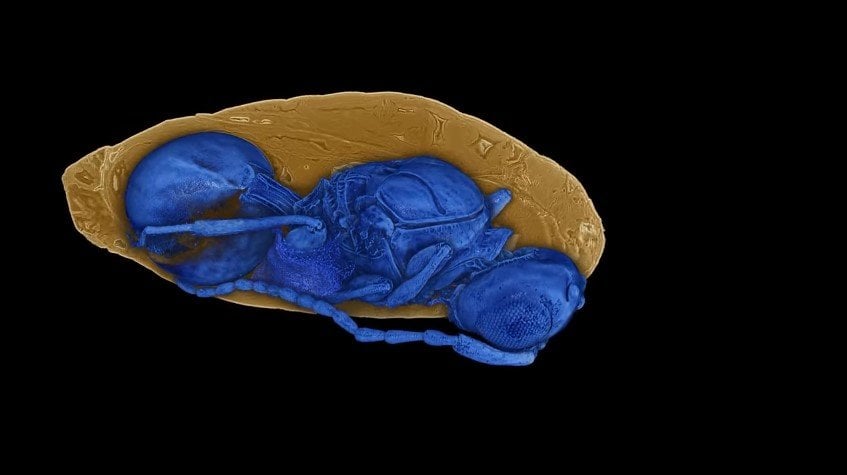Scientists discovered ancient parasitic wasps that were well preserved in fossil fly pupae. The wasps are believed to have lived during the age of dinosaurs, laying eggs inside fly pupae. The whole process rather sounds like a scene from a horror movie, except that it’s real.
The discovery is part of a project coordinated by Karlsruhe Institute of Technology (KIT), with findings being published in the scientific journal Nature Communications. The ancient parasitic wasps lived several million years ago, taking us back to the Paleogene period, which occurred between approximately 65 million to 23 million years ago. This is the definite evidence of fossil parasites discovered to live inside their hosts.
To determine the age of the fossils the team used ultrafast X-ray imaging. There were 55 cases of parasitation. In this endeavor, researchers discovered four extinct wasp species.
Like a horror movie
Female wasps would lay their eggs inside fly pupae, and as the eggs hatched, the wasps would start growing and would eat the fly pupae from the inside out as nourishment. Scientists named the most commonly found wasp Xenomorphia resurrecta. They got the inspiration for the name from the parasitic Xenomorph that appears in the “Alien” movies. The other species were named Xenomorphia handschini, Coptera anka and Palaeortona quercyensis.
“About 50 [percent] of all animal species are considered parasites,” the study’s authors wrote in the abstract of the study. “The linkage of species diversity to a parasitic lifestyle is especially evident in the insect order Hymenoptera. However, fossil evidence for host–parasitoid interactions is extremely rare, rendering hypotheses on the evolution of parasitism assumptive.”
The study that was led by Thomas van de Kamp indicated that “evidence for parasitism in fossils is generally rare as it requires preserved information of interaction between both partners.”
Previous examples
There is only one other example of previous evidence of such a discovery, one of a parasitic wasp that was found in a preserved host fossil in the Quercy region of France. The fossil is between 34 and 40 million years old, the researchers wrote in the study.
The discovery was only possible after van de Kamp and his team observed the pupae using X-ray scans, following 3D modeling that would help them reconstruct what they saw, according to the report in LiveScience.
For the study, scientists were testing and examining 1,510 pupae that were also located at the Quercy site in France. As mentioned above, there were 55 pupae revealing the signs of being parasitized. There were 52 pupae that preserved the original bodies of the adult wasps. Scientists believed that it was possible that the exoskeleton of adult wasps were more resistant to decay, compared to the earlier, softer body tissues of the earlier developmental stages of the ancient parasite wasps.
One thing is for sure, those allergic to wasp stings must be thankful that these are not around anymore. Otherwise, they would need to be more careful not to be harmed by these ones also.





